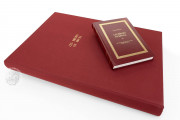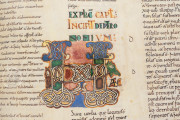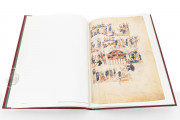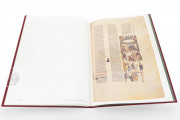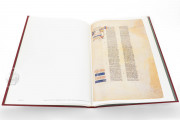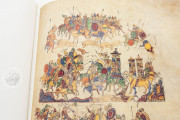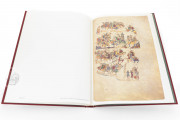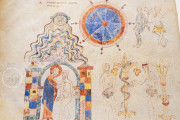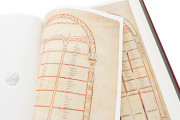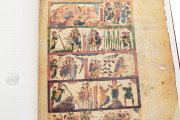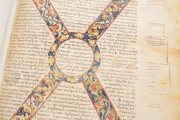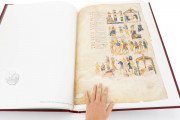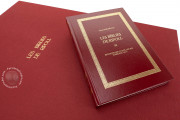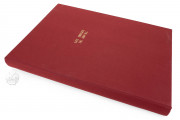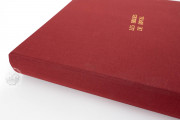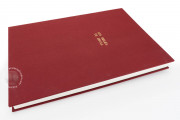The Ripoll Bible, named for its origins at the Ripoll monastery in Catalonia, Spain, was previously known as the Farfa Bible when it was believed to have been made in Italy. Made in the early eleventh century, it contains over thirty full-page illuminations and over twenty additional smaller illuminations making it one of the most illustrated bibles in the Romanesque style. The inclusion of an additional two hundred ancillary pieces, such as prologues and exegetical commentaries, creates an encyclopedia of scripture meant for the study of the sacred word.
The text is arranged in three columns, written in a fine though highly abbreviated Caroline Minuscule. Numerous later edits and additions demonstrate that the bible was well used. The ambitious project was overseen by Abbot Oliba and the tome was listed in the monastery's archives at his death in 1047.
Under his guidance, the Ripoll scriptorium produced dozens of works that transformed medieval scholarship in western Europe including early influential translations from Arabic scientific texts on mathematics and astronomy into Latin. The Ripoll Bible is a splendid example of the height of learning and scholarship in early twelfth-century Catalonia.
A Unique Cycle of Biblical Illustrations
The richly illustrated Ripoll bible features unique iconography of Old and New Testament events. Most are depicted within full-page compositions divided into registers employing the use of continuous narrative, where successive events in a story are shown within the same image.
The unique compositions are the result of combining iconographic elements from a number of different sources available to the scriptorium at Ripoll due to the political connections of Abbot Oliba across Christian Spain, France, and Italy. Aspects of the iconography, for example, the personifications of day and night, suggest a model drawn from papyrus scrolls and manuscripts from the Late Antique period.
Abbot Oliba and the Encyclopedic Bibles
Like many medieval religious leaders, Abbot Oliba was a Catalonian nobleman who forwent secular leadership for a life in the Church. The count-turned-Benedictine-monk was one of the most influential spiritual leaders in southern Europe in the early twelfth century, promoting the Peace of God movement.
A man of high intellect and learning, his scriptorium produced a great number of important manuscripts, including at least three known copies of the encyclopedic Ripoll Bible. One other, the Rodes Bible, survives. The other was destroyed by fire in 1835. They demonstrate the influence Abbot Oliba's scriptorium at Ripoll had on the western Christian world in the early twelfth century.
Carolingian Revival in Spain
The Ripoll Bible is evidence for the revival of the Carolingian style centuries later in the Romanesque period. Intricate display initial letters are formed with interlace and zoomorphic terminals and the composition of narrative sequences is drawn from the same Late Antique models revived in the ninth and tenth centuries.
The fragmented political and religious world of the twelfth century likely inspired the desire for a return to the more ordered Europe of Charlemagne, however, romanticized that was by the twelfth century.
Seventeenth-century binding of full red-brown leather with blind-tooled arabesque bands around a central gilt coat of arms of Pope Urban VIII with additional gilt bees front and back. Full corner bosses in metal with foliate designs. Two clasps with matching leather and metal fittings. The spine is gilt-tooled with additional bees with label VAT.LAT 5729.
We have 1 facsimile edition of the manuscript "Ripoll Bible": Bíblies de Ripoll facsimile edition, published by Biblioteca Apostolica Vaticana, 2002
Request Info / Price

